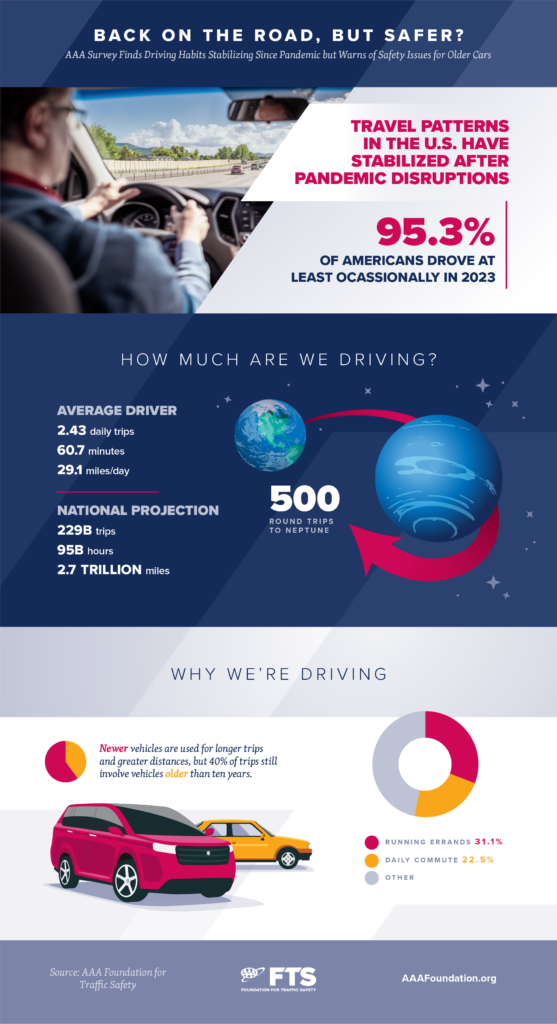The results of the 2023 American Driving Survey reveals that overall driving patterns have rebounded from the COVID-19 pandemic, according to the AAA Foundation for Traffic Safety.
The percentage of Americans who drove at least occasionally remained steady at 95.3 percent compared to 2022.
Driving trips averaged slightly less than 2.5 per day, with a duration of just over an hour and nearly 30 miles.
Most driving trips in 2023 were undertaken to run errands (31.1 percent) while commuting to and from work comprised 22.5 percent of driving trips.
Additionally, most trips began between either 11 am–2:59 pm (26.1 percent) or 3–6:59 pm (27.6 percent). Very few driving trips began between 3–6:59 am (6.7 percent) and 11 pm–2:59 am (4.5 percent).
Demographic differences were observed.
People living in metropolitan areas and those with higher education levels tend to drive newer vehicles.
Conversely, teenagers and those with lower education are more likely to drive older vehicles, the survey found.
Several emerging driving patterns that appeared after the onset of the COVID-19 pandemic in 2020 continued in 2023.
Drivers with a high school education or GED drove more miles than those with a bachelor’s degree.
Hispanic/Latino drivers had the highest driving duration and miles compared to all other ethnic groups in 2023.
Like pre-pandemic data, men spent substantially more time driving daily than women did in 2023, AAA found.
The survey found that nearly 40 percent of trips involve vehicles older than ten years. The vehicles often lack modern safety features and may be in poorer mechanical condition, potentially contributing to a higher risk of crashes, AAA noted.
Drivers living in the Midwest, West and South were likelier to drive older vehicles than those in the Northeast.
Teenagers and those with lower education are more likely to drive older vehicles.
Additionally, respondents who were divorced or separated and those who were never married were more likely to drive older vehicles than those who were married.





















 Unpacking a Consumer Intervenor’s Novel Idea
Unpacking a Consumer Intervenor’s Novel Idea  Executives on the Move at HSB, American Modern Insurance Group, AIG
Executives on the Move at HSB, American Modern Insurance Group, AIG  Bankers Readying U.S. IPOs at ‘Overwhelming’ Pace Ahead of 2026
Bankers Readying U.S. IPOs at ‘Overwhelming’ Pace Ahead of 2026  Aon Adds to List of Brokers Suing Howden US for Alleged Poaching, Theft
Aon Adds to List of Brokers Suing Howden US for Alleged Poaching, Theft 